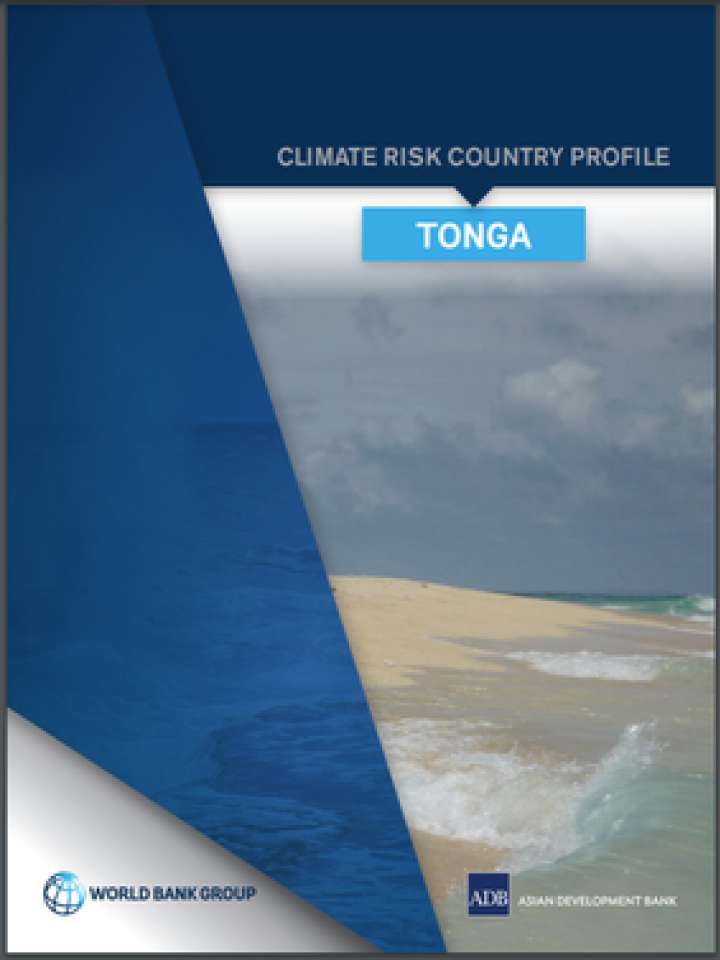Climate risk country profile: Tonga
This profile is intended to serve as a public good to facilitate upstream country diagnostics, policy dialogue, and strategic planning by providing comprehensive overviews of trends and projected changes in key climate parameters, sector-specific implications, relevant policies and programs, adaptation priorities and opportunities for further actions. The Kingdom of Tonga is an archipelago consisting of four clusters of 172 coral and volcanic islands with a total area of 747 square kilometres (km2), located in the Central South Pacific Ocean. Tonga’s climate is tropical and is defined by a wet season from November to April with moderate and variable rainfall, and a dry season from May to October. Tonga submitted its Third National Communication to the UNFCCC in 2020, its Initial Nationally Determined Contributions in 2016, its Second Nationally Determined Contributions in 2020 and ratified the Paris Agreement in 2016.
This climate risk profile provides a number of key messages for the climate future of Tonga, including:
- Tonga’s island groups have observed historical warming of around 0.6°C between 1979 and 2018.
- Tonga faces a diverse set of risks from climate change but data and reliable model projections are lacking, presenting challenges for decision makers.
- Biodiversity and the natural environment of Tonga face extreme pressure, and loss of some species of fish, coral, bird, and terrestrial species is likely without very effective conservation measures.
- Communities are likely to need support to adapt and manage disaster risks facing their wellbeing, livelihoods, and infrastructure. Geographic isolation and economic vulnerabilities, including dependence on remittance and foreign aid, will increase the challenges faced by communities and decision makers.
Explore further
